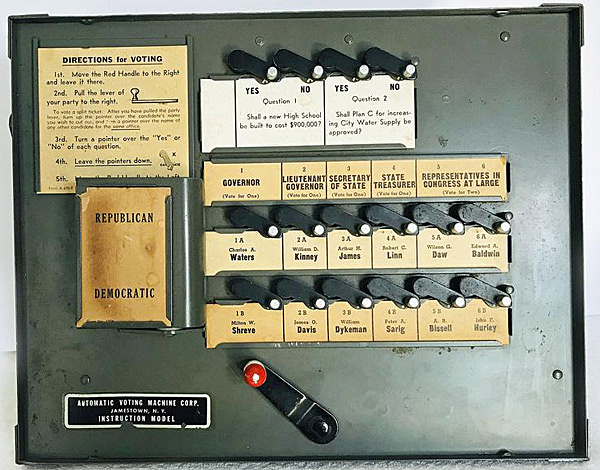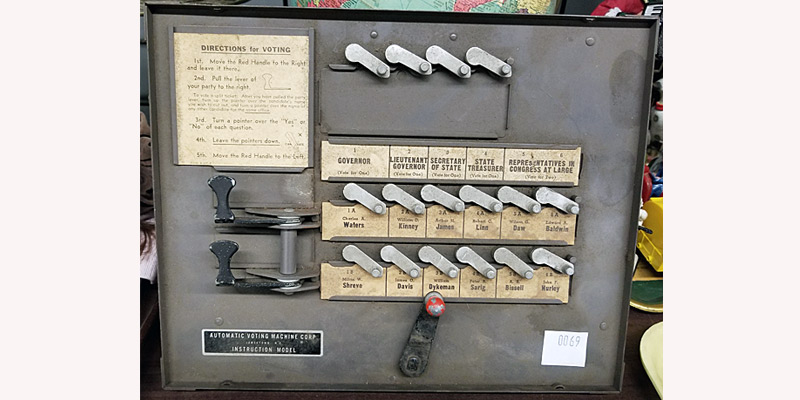The gray metal machine looked innocent enough, but I knew that it was a remnant from an unhinged Jim Crow past. It didn’t have the power to stop anyone from voting, but the people who owned it did have the power and used it ruthlessly.
As soon as I saw the portable lever voting machine on the auction table, I was drawn to it. I’d used versions of it when I was finally of voting age. And I have voted in every election because I know that Black folks have fought and protested and lost their lives so I can walk unfettered into a polling place and pull those levers.
This machine didn’t force black folks to pay a poll tax. It didn’t require them to answer questions about the state constitution. It didn’t ask trick questions that were nonsensical. It didn’t use fear and violence to bar them from voting. It didn’t fire them if they tried to vote.
It represented the end result of a struggle of endurance by Black folks before 1964: the constitutional right to vote.
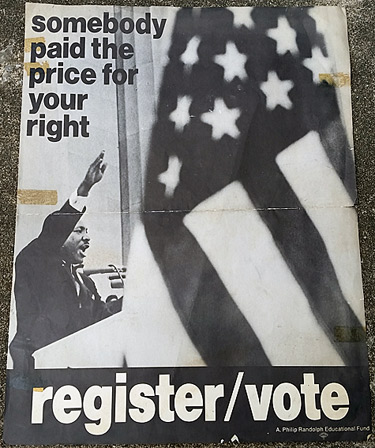
I came across the voting machine some years ago, photographed it because of its symbolism and put the image aside. Now, we are in the midst of a presidential campaign harboring some of the same malevolent forces that plagued the civil rights activists of the 1960s. George Wallace and Bull Connor in Alabama, Lester Maddox in my home state of Georgia and the ubiquitous white councils have been replaced by some well-known modern-day nemeses, in particular President Trump. He’s no Lyndon Johnson.
The tactics that were used to keep Blacks from registering to vote in the South have been replaced by methods to suppress their voting today. Voter ID, the flushing of voting rolls, the assault on absentee balloting and the disruption of voting places are the 21st-century versions. Stacey Abrams, the Democratic nominee for governor of Georgia in 2018, and others are pushing to eliminate these new voting barriers. We – young folks, especially – should be right there with them.
The suppressors know that voting is key to gaining and maintaining power. It was so then and it still is today. That’s why they are trying so desperately to keep Black and brown people away from the polls. Voting gives us the ability to put folks in office who will do us the least harm. It’s our responsibility.
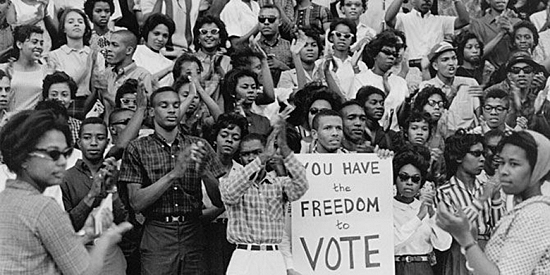
Those civil rights warriors who marched through the South understood the importance of voting. SNCC (Student Non-Violent Coordinating Committee) and CORE (Congress of Racial Equality), among others, held classes to teach African Americans how to pass state literacy tests. These tests included questions that most U.S. citizens, including the election-office workers, could not even answer: politics, elected officials and offices, and state and U.S. constitutions.
In Louisiana, if you were Black and failed two questions you were dismissed. Whites summarily passed regardless of how many they missed – not because they were smarter but because the system worked for them. One parish in Louisiana was said to have used what one site described as a “brain-twister” test that spoke more about its own imbecility. Some questions:
“Above the letter X make a small cross.”
“Draw a triangle with a blackened circle that overlaps only its left corner.”
“Spell backwards, forward.”
“Print the word vote upside down, but in the correct order.”
Even a group of Harvard students in 2014 couldn’t pass it.
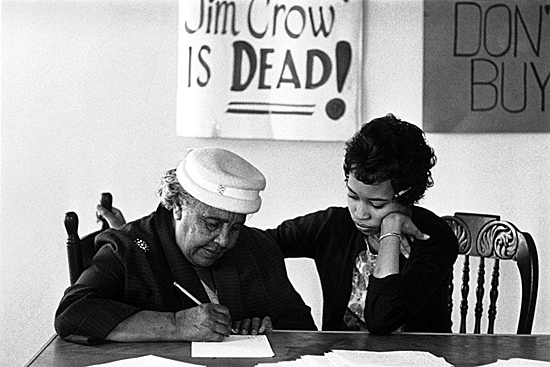
In Georgia, you had to get 20 of 30 questions right in a short period of time. A sampling:
- What is the republican form of government?
- In what senatorial district do you live and what are the names of the counties in the district?
- What is the definition of a felony in Georgia?
- How many representatives are there in the Georgia House of Representatives and how does the constitution of Georgia provide that they be apportioned among the several counties?
- What does the Constitution of the United States provide regarding the suspension of the Writ of Habeas Corpus?
- What does the Constitution of the United States provide regarding the right of citizens to vote?
In Alabama, you first had to get past the worker by reading a passage from the state constitution. Mispronounce a word, and you couldn’t go on to Parts B and C. A sampling:
- Has the following part of the U.S. Constitution been changed?:
“Representatives shall be apportioned among the several states according to their respective numbers, counting the whole number of persons in each state, excluding Indians not taxed.” - There are three main types of city government in Alabama. Name one.
- Name the man who is nationally known for heading the Federal Bureau of Investigation for many years.
- Name one area of authority over state militia reserved exclusively to the states.
- Can the president of the United States be removed from office for conviction of bribery?
Most African Americans never got close to the voting machines, not even this “Instruction Model.”
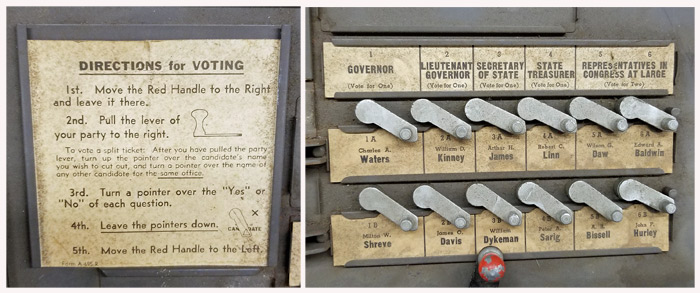
The machine was made by a Jamestown, NY, company named Automatic Voting Machines Corp., a major manufacturer of the machines. The first voting machine was said to have been made in the 1890s by Alfred J. Gillespie based on a patent by Jacob H. Myers. The two men eventually co-founded Automatic. Myers said the machine would “protect mechanically the voter from rascaldom, and make the process of casting the ballot perfectly plain, simple and secret.”
It was a flat table-top machine with a metal support on the back that pulled out to allow it to stand. These machines were presumably set up at polling sites so workers could demonstrate to voters how to use the actual machines in the curtained voting booths.
The machine has paper labels for what appear to be Pennsylvania state elections for governor, lieutenant governor and other offices. I found several like it on the web with the same labels. Missing from the auction machine were two vague referendum questions: “Shall a new Court House be constructed?” and “Shall Peddling be allowed in the public streets.”
It’s not clear when these were first or last used, or if the election was legit. A few sites noted that the candidates were from a 1920s election, but I could find no verification. Another site showed a similar machine that it stated was used in the 1956 presidential election.
